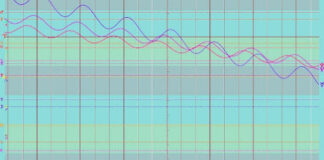
We all know there are benefits and drawbacks to today’s modern healthcare system in the Western world. When it comes to treating physical symptoms, our healthcare system could be considered very advanced. Yet when it comes to understanding root causes of problems and transforming the core issues themselves, we are often missing the mark.
One contributing factor to this lack of properly solving chronic health issues at their root cause could be the way we label things. Labeling itself can serve initially, because it allows us to clearly see that there is a problem which needs to be addressed.
However, beyond the initial label we can often get caught up in demonizing the symptoms of our experience instead of viewing them as critical feedback that is communicating information to us. In my opinion, this is one of the ways our current healthcare system can even cause more harm than good.
What is a Key Example of our Healthcare System Treating Symptoms Over Root Causes?
Instead of looking at depression as a pattern of emotional feedback for our perceptions and subconscious programs, we label it “depression” and disclose that the cause is a “chemical imbalance” that should be treated through medication.
When you take a closer look, there aren’t many people who are born with a chemical imbalance that specifically creates depression. It is something that is developed over time.
Where does this chemical imbalance come from? It comes from our thoughts. Since thoughts create emotions and emotions are made of neurochemical reactions, our programmed thought and belief patterns are the actual source of the chemical imbalance.
For example, if I walk into a room full of people at a social event and have an underlying belief that “people don’t like me,” I will walk into the room with a sequence of belief-related thoughts that will trigger a stress response reaction within my body. The thoughts are creating the neurochemical response, see?In laymen’s terms, if I have negative thoughts it creates negative neurochemical reactions. If I have positive thoughts, it creates positive neurochemicals – most often dopamine and serotonin. Guess what type of neurochemicals anti-depressant drugs are helping our brains to manufacture? You guessed it.
By treating depression as a “chemical imbalance” we are treating the symptoms of depression, not the subconscious programs of thoughts and beliefs (a.k.a. the roots). By treating only the symptoms, we actually allow the root issue to stay alive and perpetuate itself beneath the surface.
Does this mean anti-depressants are bad or don’t work? Absolutely not. These can absolutely serve in the short-term context of providing enough stability for the root to then be addressed.
It is specifically when we address one part of the problem without addressing the other that problems arise. Both serve, but they must both be made aware of.
So Who is Garret John LoPorto?
Garret John is an author, speaker, advocate and founder of Wayseer.org. He is a pioneer of new ideas and created a viral video series to inspire people to re-connect with their inner truth.
After doing an incredible interview with Garret, it became clear to me that he takes a different approach on the way he sees core issues the healthcare system is currently diagnosing and medicating.
Garret and his research lead him to discover patterns behind the core qualities that pioneering entrepreneurs have, and so-called symptoms of disorders that the Western healthcare model is currently diagnosing as ADD, ADHD, addictive pre-dispositions and objective-defiance disorder.
One of the core examples he used was ADD and ADHD. He re-named the qualities associated with ADD as qualities of a “DaVinci Type,” or “Wayseer.”
ADD (Attention Deficit Disorder) / ADHD (Attention Deficit Hyperactivity Disorder) is the most common diagnosis amongst young children in psychiatric clinics. ADD is characterized by “disruptive, attention-seeking behavior” (Wallach and Kogan (1965) p. 294-295), inability to pay attention for extensive periods of time, impulsiveness and an inability to control impulses compared to the status quo.
What Key Qualities Represent the “DaVinci Type/Wayseer?”
LoPorto found that ADD/ADHD is not a disorder, but a hereditary or genetic condition that is found in persons who have gene DRD4 7R allele that is present in about 10% of the world’s population and up to 25% of Americans. The gene is exceptionally prevalent amongst extraordinarily creative or highly successful people. There are core qualities associated with this gene including:
- Elevated levels of “openness”
- The ability to think outside of the box
- Creativity (especially as it relates to problem solving)
- Need for novelty, stimulation, and growth
- Risk-takers
- An extreme need for exploration
- Often charisma
- Empathy
- Sensitivity
People with this genetic variation present have a different relationship to dopamine. Garret’s research shows that this temperament is often necessary for high-level athletes, inventors, entrepreneurs, rock stars and pioneers of different fields of research.
Garret also noted that these “Wayseers” are often highly creative, expressive and emotionally intelligent individuals. They are often restless, can be averse to authority and are often kinesthetic learners.
Another avid researcher and thought leader Dr. John DeMartini has done ample research on this topic also. His argument against labelling ADD and ADHD stems from the question, “How can a young boy be diagnosed with ADD and struggle in school, but proceed to be completely focused on hours of video games on end at home?”
Dr. Gabor Mate, another pioneer for change in the healthcare system has found some profound links between ADD and trauma. His theories revolve around the idea that when a child can’t fight or flee from emotional trauma they are not able to properly process, the brain forms a coping mechanism in which it incessantly “flees” by dissociating when stress is triggered.
How Should We Be Addressing This Issue?
There are enormous amounts of conflicting research revolving around ADD and ADHD. Is it possible that the single most “diagnosed” disorder among young children actually has limited concrete evidence to back it up?
Is it possible that we are medicating and changing the brain chemistry of children and young adults without even knowing what is really going on?
We don’t necessarily have the answer, but in the very least, information this inconclusive certainly tells me that we don’t need to be jumping to medicate kids. If we can’t find concrete evidence, why not try working with these traits instead of attempting to diagnose and suppress them?
Why You Should Watch This Interview
Garret shares some incredible insights in this interview. He also provides a series of different potential solutions for both individuals and systems in society.
He is incredibly insightful, helps us to think outside of the box and shares the importance of questioning the information we are receiving so that we can learn to connect to ourselves and our heart’s truth.
Disclaimer: We at Prepare for Change (PFC) bring you information that is not offered by the mainstream news, and therefore may seem controversial. The opinions, views, statements, and/or information we present are not necessarily promoted, endorsed, espoused, or agreed to by Prepare for Change, its leadership Council, members, those who work with PFC, or those who read its content. However, they are hopefully provocative. Please use discernment! Use logical thinking, your own intuition and your own connection with Source, Spirit and Natural Laws to help you determine what is true and what is not. By sharing information and seeding dialogue, it is our goal to raise consciousness and awareness of higher truths to free us from enslavement of the matrix in this material realm.
 EN
EN



























I found out forty-four years ago that the medical profession was and still is woefully lacking in understanding the spiritual nature of man and the effect of past life traumas & abilities on each of these children’s mind & body. Check out Dianetics by LRon Hubbard.
In children, the symptoms ADHD and PTSD are the same. Guess which one blames the kid? Watch the film “Resilience: The Biology of Stress and The Science of Hope” for more info on this.